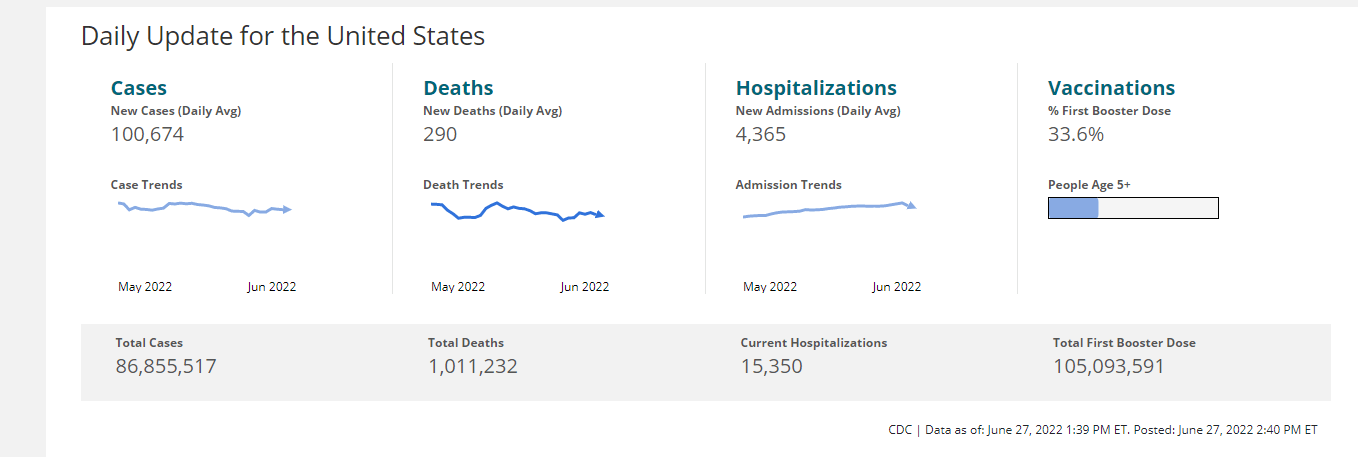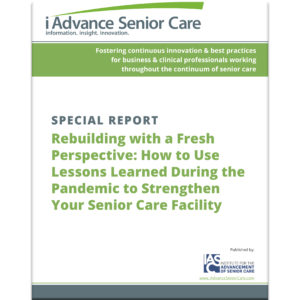Best Practices When Implementing a Senior Care COVID-19 Testing Program

Andy Greenfeld, head of marketing, Avellino
As the COVID-19 pandemic threatened the lives of senior care facility residents and staff, testing programs proved to be essential in helping to monitor and prevent virus transmission. Proper diagnosis allows organizations to respond quickly to COVID-19 outbreaks, which is vital when working with vulnerable senior populations.
As COVID-19 continues to be a concern, senior care organizations can maximize their testing program effectiveness by ensuring they follow best practices.
Challenges in Implementing COVID-19 Testing Programs
Implementing an effective COVID-19 testing program isn’t without its challenges, however it was and continues to be essential.
“While hopefully the very worst of the COVID-19 pandemic is in the rear-view mirror, we realize COVID-19 remains a distinct health threat globally,” explains Andy Greenfeld, head of marketing at Avellino. “A very sobering fact is that in late June 2022, 290 people died daily from Covid-19 in the US, and in this same time period, 15,350 were hospitalized.”

Testing continues to be an effective way to track the virus, allowing senior care organizations to take swift action by quarantining and monitoring residents. Knowing that a resident is positive for COVID-19 also enables the organization to quickly get the resident medical care.
To maximize testing effectiveness, it is important senior care organizations find a quality partner who has the right testing type, and who can also provide timely and reliable results.
The test also needs to be simple to administer. “Older people tend to have other underlying conditions, so a test that is cumbersome or painful is not ideal,” explains Greenfeld. “Rather, a simple test that is highly accurate and sensitive and can detect presence of the virus with a small test sample is more desirable.” Similarly, organizations need to be able to easily access and share test results with the resident.
Best Practices in Implementing a COVID-19 Testing Program
Greenfeld recommends that any testing program have safety protocols and procedures in place. These procedures include recommendations identified at the pandemic’s onset, including maintaining distance between people, frequently hand washing, avoiding touching your face, and wearing a mask. It’s also important to identify protocols for visitors and to provide clearly-marked instructions to guests.
When it comes to testing, it’s important to communicate the testing basics with residents. Share information such as what time testing is available, testing location(s), what the resident needs to bring with them to the test site, and any post-testing instructions. It’s also important to share when a resident should be tested, including if a resident’s visitor discovers they have COVID-19.
Greenfeld notes that staff need to be fully trained and should understand the test’s requirements. Staff also need to have a good line of communication with the testing company’s point of contact. “With this line of communication, if any questions arises or there are updates to share, both parties can quickly and easily contact one another and address any issues or challenges together,” he explains.
It’s also important to choose a test that is simple and easy to use. The AvellinoCoV2 test is a simple, painless PCR test. The testing swab only needs to enter about a half-inch into each nostril. Then, the swab is swished in the testing tube, the tube is sealed, and the test is ready for pick up, drop off, or shipment to the Avellino laboratory in California.
Senior care organizations need to carefully consider the testing vendor they use. Greenfeld notes senior care organizations often have to deal with multiple vendors as part of their testing program. “This can be high-risk, as there may be multiple parties to deal with if there are issues, and the entire program may be slowed down or face significant delays if one vendor is facing challenges,” he says.
To ensure that each organization’s testing program runs smoothly and without delay, Avellino offers sample collection services. “We work tirelessly to meet the unique needs of each facility and personalize our approach for each client,” says Greenfeld. “One service our clients really appreciate is being able to collect the patient samples for them, which saves them time and resources.”
When choosing a testing vendor, a senior care organization should ask about the average test turnaround time. Delays in receiving results can leave a program ineffective, allowing outbreaks to spread before the organization can take action. Greenfeld explains that Avellino’s results are normally delivered within 48 hours once the sample arrives at the lab. Test result turnaround times (TAT) average within 24 hours, meaning staff can quickly respond to circumstances like outbreaks or surges in COVID-19.
Finally, a senior care organization’s testing program can only be effective if the vendor they are using offers highly accurate testing. It’s important to confirm accuracy rates before choosing a vendor.
Senior care organizations likely already have testing programs in place, but reviewing those programs and implementing these best practices can help ensure the program is effective, well-run, and addresses any needed additions to further strengthen the organization’s COVID-19 prevention strategies.
The Importance in Investing in a Quality Testing Program
The COVID-19 pandemic will not abate in the near future, so it’s essential that senior care organizations be prepared for how the pandemic will continue to evolve.
“In general, we have seen a number of variants, as well as subvariants such as Omicron BA.2.12.1, BA.4 and BA.5, so being prepared for future waves or future variants – some which may turn out to cause more serious symptoms or cause new symptoms – is vital,” says Greenfeld. “Knowing the COVID-19 status of residents can help staff take appropriate measures to protect the health of their residents and staff.”
Taking the time to create an effective, well-thought-out testing program is an investment in residents’ health and safety. “Unfortunately, none of us have a crystal ball, so we do not know what the future will bring, including when the next pandemic may strike,” notes Greenfeld. “Maintaining one’s Covid-19 testing program and preparing for future spikes in cases can help mitigate the spread of the virus and keep residents as safe as possible.”

Paige Cerulli is a contributing writer to i Advance Senior Care.
Related Articles
Topics: Administration , Featured Articles , Resident Care , Training











